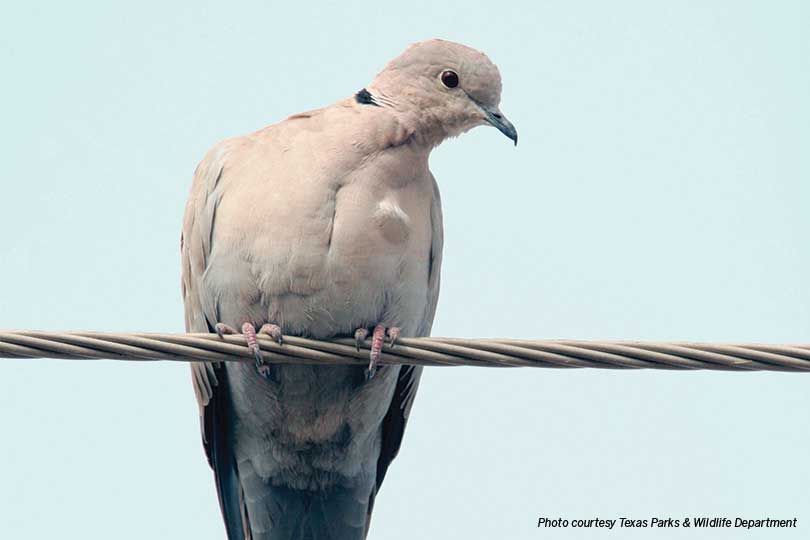By Jessica Domel
Multimedia Reporter
While dove hunting season is over, an invasive species presents another opportunity for Texas hunters.
Eurasian collared-doves can be hunted year-round with a valid hunting license.
There are no bag limit restrictions.
“It’s pretty much open means and methods as far as hunting them,” Owen Fitzsimmons, Webless Migratory Game Bird Program leader for the Texas Parks and Wildlife Department (TPWD), said. “The biggest thing is if you are going to hunting them during dove season, or even outside of dove season, it’s always smart to leave a little bit of plumage on the birds.”
The plumage helps game wardens verify the bird is an invasive species and not one of the native doves that must be hunted within a set season.
Eurasian collared-doves are considerably larger than a mourning dove and slightly larger than a white-winged dove.
They’re pale gray with a black collar around the back and sides of the neck. They have a white-squared tail underside, a black bill and red irises, according to TPWD.
They can be found in more than 130 counties in Texas.
“They’re very much tied to human habitation, and that’s true everywhere else in the world that they’re found,” Fitzsimmons said. “They can actually survive pretty cold weather.”
The invasive birds are primarily native to the Indian subcontinent but have been found in places like Norway and northern Europe.
“I think they’re able to tolerate the cold conditions a little bit better, kind-of like pigeons,” Fitzsimmons told the Texas Farm Bureau Radio Network. “Part of it, I think, is that they’re in the city where it doesn’t get quite as cold, and they can find plenty of nooks and crannies to hide.”
There are an estimated three million Eurasian collared-does in Texas.
Experts say they seem to fly lower and slower than mourning and white-wing doves, and tend to fly in pairs rather than in flocks.
Each year, the Texas Dove Hunters Association hosts a Banded Bird Challenge to encourage hunters who bag a Eurasian collared-dove to report their catch.
It’s all part of the association’s efforts to learn more about the spread of the invasive species.
While this year’s challenge is over, hunters can still report bagging a tagged Eurasian collared-dove to the number on the orange tag.
The regular hunting season for mourning and white-winged doves in all three zones ended earlier this month.
Photos of protected and non-protected doves in Texas are available in the Outdoor Annual.


I like this!! Noisy and messy pests.